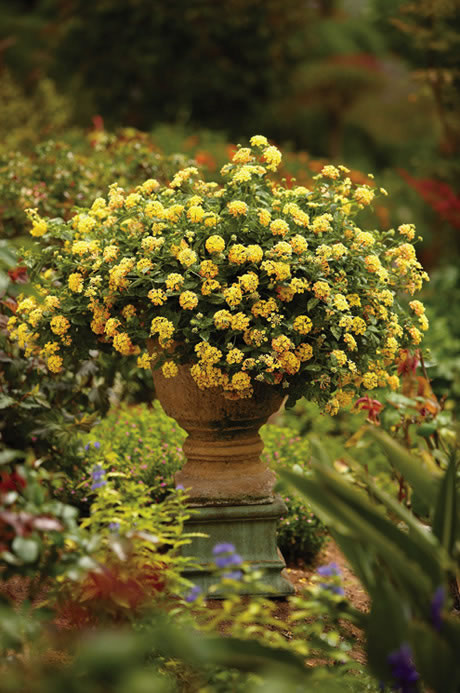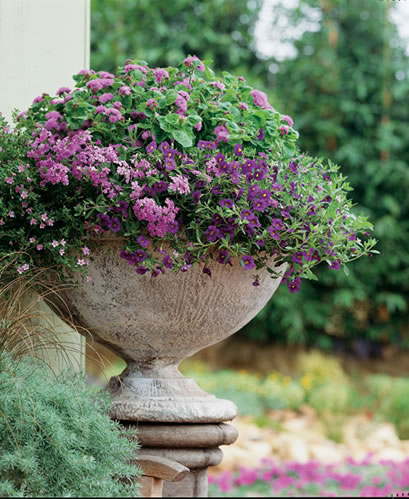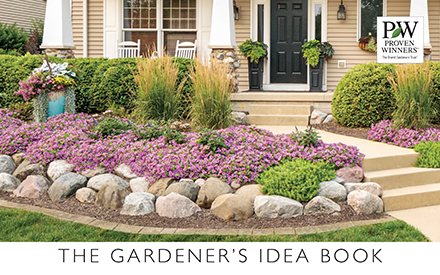Container Garden Design - Color
Learn about the different styles of designs for containers.
More than likely, every gardener, no matter how large or small the garden plants containers of some kind. For some people their entire garden is containers. Proven Winners® is known for having great combination planter ideas and there are hundreds of container garden recipes available for browsing on our website. However, you may also want to design your own container gardens. This is one of a series of articles on designing container gardens.
The first thing to consider when you start designing your container garden is color. There are a number of different ways to combine colors in a combination planter. I will cover the main categories of color combination, in this article.
The easiest container to design is the mono-crop or mono-culture container. This is simply choosing a single variety for your container, although more than one plant may be used to fill the pot. It couldn't be simpler and it doesn't have to be boring. Mono-culture plantings are great for highlighting a great piece of pottery or creating a solid pop of color. When planning a mono-culture it is important to choose a plant that has staying power and will fill your container well. The pottery used adds another dimension to your design. Any type of pot, from classic to colorful to a found object, can work with a mono-culture planting. To see more mono-crop recipes click here (they are mixed with mono-color designs).
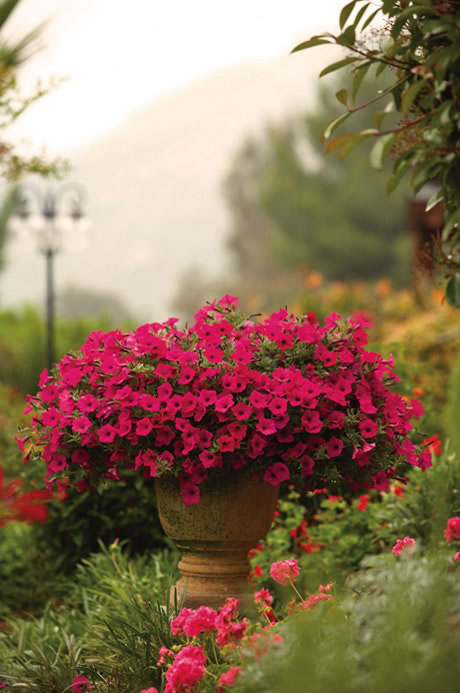 |  |
|
The next simplest design is the mono-color design. Mono-color or monochromatic designs use a range of shades of a single color - different shades of pink or purple, red or orange, yellow or blue. Mono-color combinations utilize at least two different shades of a color, but because you are using the same color you don't have to worry about the colors clashing. However, you still get some color variation. When putting together a mono-color design you want to choose a pot that is either a neutral color (white, terra cotta, black, silver, etc) or coordinates with your color scheme. To see more mono-color designs click here (they are mixed with mono-crop designs).
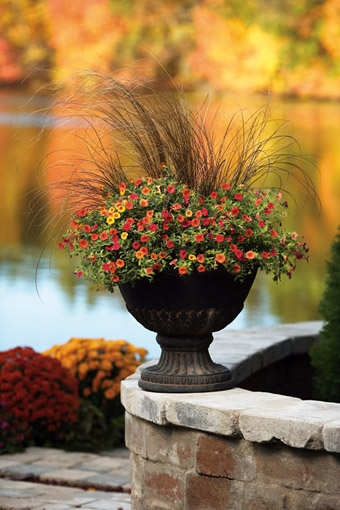 | 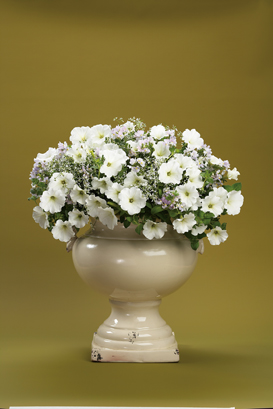 |
|
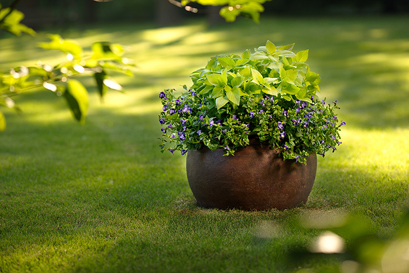 The rest of the container designs are different ways of utilizing more than one color. There are as many ways to combine color as there are gardeners putting together planters. If you are happy with the colors you've used, then other opinions don't really matter. However, there are some general rules that can help you put together good color combinations. To really understand the use of color, a color wheel is helpful. This article on color in the landscape, illustrates the color wheel and showcases many of the concepts we will talk about, but applies the theory to landscapes.
The rest of the container designs are different ways of utilizing more than one color. There are as many ways to combine color as there are gardeners putting together planters. If you are happy with the colors you've used, then other opinions don't really matter. However, there are some general rules that can help you put together good color combinations. To really understand the use of color, a color wheel is helpful. This article on color in the landscape, illustrates the color wheel and showcases many of the concepts we will talk about, but applies the theory to landscapes.
The first way of combining color is utilizing analogous colors. Analogous colors are next to each other on the color wheel and mix together easily. Some examples of analogous colors are yellow-orange, orange-red, yellow-orange-red, violet-red, blue-green, and blue-violet. Analogous colors can be bright or muted, but they lie next to each other on the color wheel. Thousands of colors exist and a more detailed color wheel can help you effectively use the many shades of color available. The photo on the left shows the analogous colors of blue and green. Below, the photo on the right is violet and red (lavender and pink). The middle photo shows red, orange, and yellow. The photo on the left shows yellow and orange.
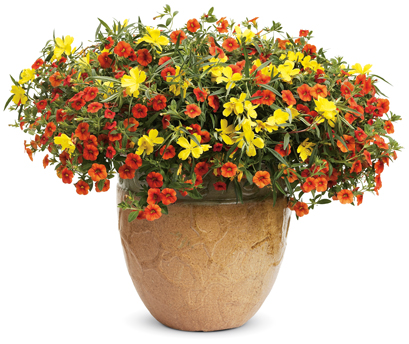 | 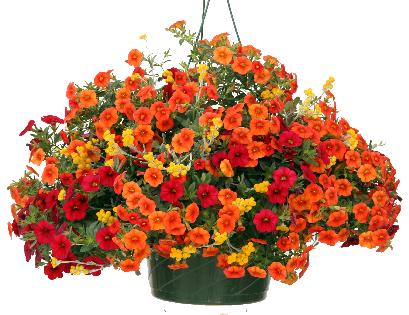 | 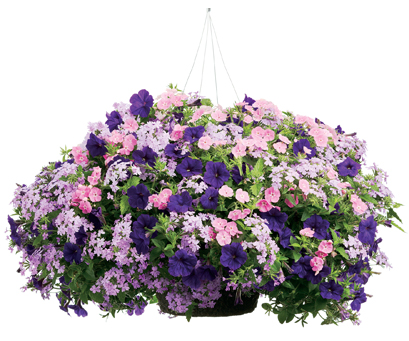 |
Now we are starting to get into the really fun stuff - complimentary colors. To design with complimentary colors, simply look at the color wheel and choose the colors that are opposite of each other. On our simple color wheel, complimentary colors are red and green, orange and blue, and yellow and violet. Complimentary colors create a ton of contrast and cause both colors to pop. Be sure to consider color intensity when using complimentary colors - you may not want to mix a soft orange with bright purple. Bright orange is better with bright purple.
Don't forget that the pot and background around the pot can be a part of the color scheme, too. A cobalt blue pot with yellow flowers utilizes a complimentary color composition. The photo on the right, shows a red and green color scheme that incorporates not only flower and foliage color, but the container as well. The photo in the center, demonstrates a blue-orange color scheme, utilizing Superbells® Dreamsicle® Calibrachoa and Laguna® Sky Blue Lobelia. There is some yellow and red, but the orange and blue by themselves is truly outstanding. The combination of these two colors makes each look better. The photo on the right, displays a violet and yellow color scheme.
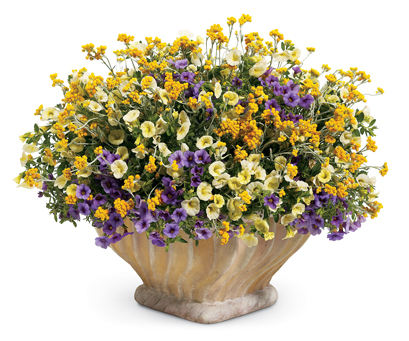 | 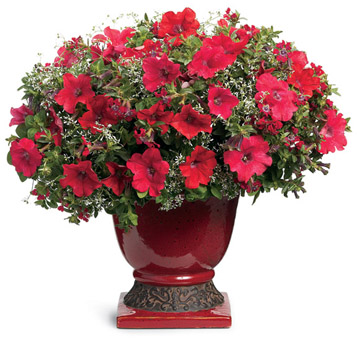 |
Using complimentary colors is more daring than the previous color schemes and can create more drama in the garden.
The last color scheme is the triad. Triads use 3 colors that are spaced equidistant on the color wheel - the points of an equilateral triangle. Triads can be harder to pull off because you are utilizing several different colors. On the basic color wheel, we have been using there are two triads - red-yellow-blue and violet-orange-green. The photo on the right shows a red-yellow-blue triad. The photo in the center shows a pink-yellow-blue triad. The photo on the left shows an orange-violet-green triad, the third plant in the combo is a neutral color.
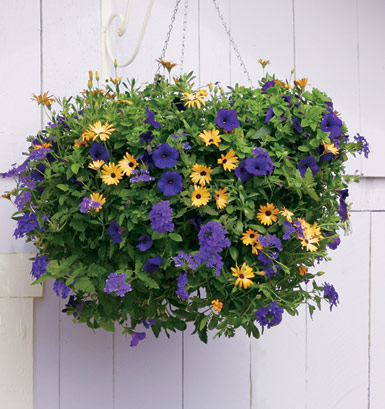 | 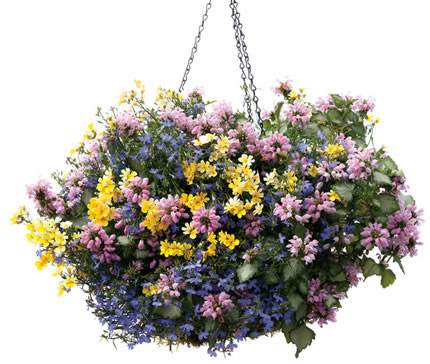 | 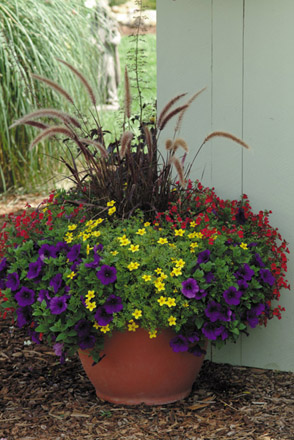 |
In addition to the colors we've been talking about, there are a number of neutral colors including white, black, grey, silver and shades of brown. In addition to these neutrals, in the garden green also functions as a neutral. Neutral colors can be used with any color scheme to add dimension.
Beyond just thinking about color scheme, colors tend to come in two different categories - hot colors and cool colors. Hot colors are red, orange and yellow. Cool colors are blue, pink and purple. Hot colors tend to draw attention. They are great to use in areas to which you want to draw attention. Place them by doors, walkways and in far corners of the garden to draw attention to spots that might otherwise be overlooked. They are great to use in spaces where people will gather. Cool colors tend to lend calm and tranquility. They are great to use in spaces where you want to relax. Consider matching your color scheme to the use you intend for each area of your garden or outdoor living space.
For more information on Container Garden Design, try these articles:
Container Garden Design - Foliage and Texture



